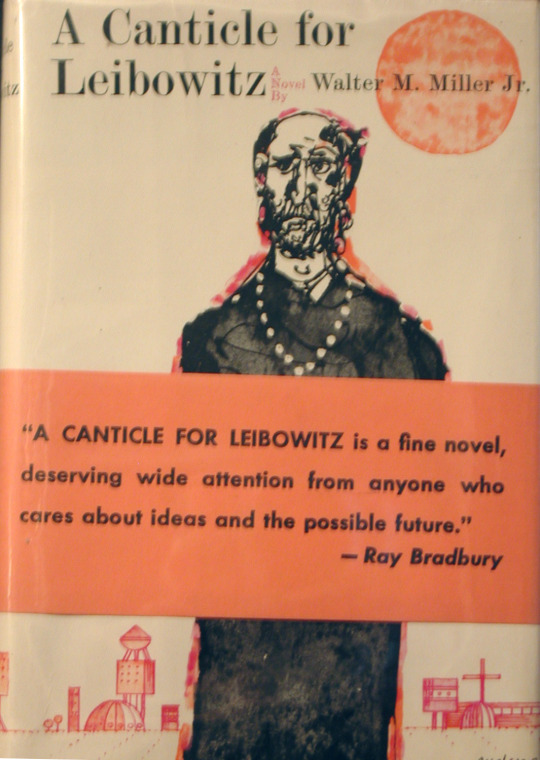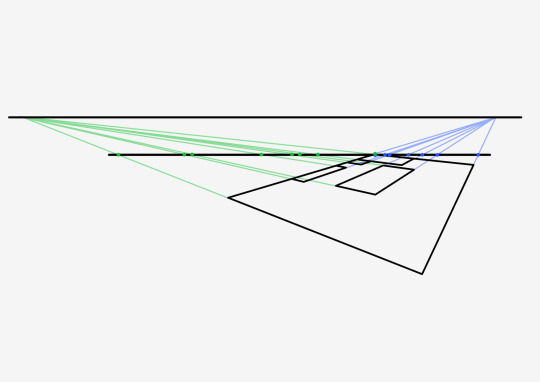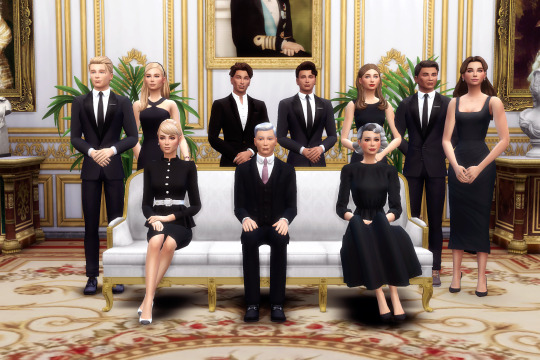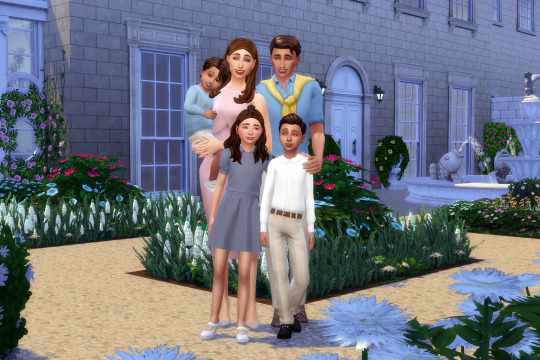#Albertian
Explore tagged Tumblr posts
Text
This is once again the most niche target audience I could post for but reminder to Albertians voting day is TODAY! GO VOTE NDP! Polls close around 8pm but check your local areas! Please go make a difference!
60 notes
·
View notes
Text
He's from Alberta!
He's never seen the ocean, Alberta is land locked
His first language is English, and while people do speak English in large Quebec cities, their FIRST language is normally French
Alberta has mountains for snowboarding he could drive to if he lived in Calgary
He has an old school uniform, meaning he likely went to Catholic school (he also crosses himself), Alberta has a large Catholic population
#VOTE ALBERTA#MY BOY IS ALBERTIAN#his options were never good#either Ontario Quebec or Alberta#the three worst provinces#sk8 the infinity
148 notes
·
View notes
Text
Josh has all of the Canadian/Albertian? laws memorized
3 notes
·
View notes
Text

A CANTICLE FOR LEIBOWITZ by Walter M. Miller. (New York: Lippincot, 1959) Cover art by M. Glasser. First edition was issued with a paper banner from publisher.
‘A Canticle for Leibowitz is a post-apocalyptic social science fiction novel by American writer Walter M. Miller Jr., first published in 1959. Set in a Catholic monastery in the desert of the southwestern United States after a devastating nuclear war, the book spans thousands of years as civilization rebuilds itself. The monks of the Albertian Order of Leibowitz preserve the surviving remnants of man's scientific knowledge until the world is again ready for it.
The novel is an amalgamation of three short stories Miller had originally published in The Magazine of Fantasy & Science Fiction [April 1955-February 1957], inspired by the author's participation in the bombing of a monastery at the Battle of Monte Cassino during World War II. The book is considered one of the classics of science fiction and has never been out of print. Appealing to mainstream and genre critics and readers alike, it won the 1961 Hugo Award for best science fiction novel, and often appears on "best of" lists. It has been recognized three times with Locus Poll Awards for best all-time science fiction novel. Its themes of religion, recurrence, and church versus state have generated a significant body of scholarly research.’
source [NPR radio drama]
source [paperback edition]
#book blog#books#books books books#book cover#science fiction#walter m. miller#post apocalyptic#a canticle for leibowitz#hugo awards#locus awards#radio drama#religon#misremembrance#book collecting
18 notes
·
View notes
Text
@dj-shitslot
#crazy pop rocks in that joint dog #piercing the horn....#very prince albertian
the "joint" is just a regular cigarette, but I use em as wands. etc etc.
also lol. I guess so. I was either gonna etch them or pierce them but etching takes longer and you have to redo that.
I like your username btw.
2 notes
·
View notes
Note
at this point I am willing to try and look for an Albertian therapist that's kind to systems, myself. You are my friend and I want you to be happy and healthy.
I'm happier and healthier now than when i was in therapy. You don't need to worry about me it's fine
0 notes
Text
Transferring patterns.
Let's say that you have a pattern that you want to transfer onto a wall in perspective. Even when excluding using a perspective tool that most digital softwares tend to have, there are still many ways of achieving this. I’m going to cover three methods.
The first one is simple. just draw a grid over the pattern that you want to draw, then draw the same grid in perspective, then use that grid as a guide.

Trying to focus both on small and large details at the same time can be difficult. This technique lets you focus on the details in each square individually, without having to worry too much about larger proportions or composition.
(If you don't know how to draw a perfect grid in perspective then I recommend you read about diagonal vanishing points.)
This technique can be used in a variety of ways even outside of perspective. People have used similar techniques to transfer small sketches onto larger canvases, or when drawing from photos.

(Photo by @paper-mario-wiki )
With the right setup, you can even use this to help draw from real life.

This device is called an albertian veil or alberi’s veil. It's apparently been used since the 15th century, but I’ve had a hard time finding a lot of information about them.
The next two ones are different executions of the same idea. That is, lines that are parallel with the picture plane don't experience any distortion. By storing information about a pattern as intersections on a horizontal line, we can transfer this information into perspective.
The first one is the easiest to set up. It takes advantage of the fact that if you take a series of parallel lines, an intersection of them will always have the same relative distances between each other, no matter the angle of the intersection.

The idea is that if you use the wall and a horizontal line as intersections, we can add these parallel lines afterward to make sure the spacing between certain points remain the same.

start by taking a pattern and draw vertical lines through the parts you want to transfer to a wall. Now, draw a horizontal line through them that we will bring into perspective.

Put the edge of the line next to the close edge of the wall you want the pattern on. Now, draw a line from the other edge of the horizontal line through the far edge of the wall, and extend it until it crosses the horizon. This is where we will put our vanishing point for the parallel lines

From this vanishing point, draw lines towards the rest of the intersections on the horizontal line. where these lines cross the wall, add vertical lines.

You can now use these to help draw the rest of the pattern.

As you've probably noticed, this only helps you find vertical lines. Horizontal or diagonal lines need to either be eyeballed or you need to find another method, like the next one.
The last method I’ll cover can be a lot trickier to set up. The theory is probably simpler than the one above, and you’ll get more information out of it, but it relies on you knowing the angles of the lines you are working with with your vanishing points. Making this technique less reliable whenever you are not working with a full setup.
You start with the initial pattern, as usual, as well as a horizontal line above it, like the second method. However, instead of just drawing vertical lines, we draw a bunch of lines at different angles.

The idea is, if you redraw these lines from these intersections at the same angles, you should be able to recreate the pattern.

Now, all we need to do is add this line to our drawing, and draw those lines from their respective vanishing points.

Fun fact: Literally every book I've read that covered this method has referred to it as a method used by architects to draw floor plans.

I find this method satisfying to use. It has the “trust fall” feel that some perspective techniques have where they feel like they shouldn't work. So using it, and seeing everything fall into place, feels a bit exciting. However, for practical applications, I’d recommend just using the grid method I described at the beginning of this post. The difficulties of knowing how it will turn out before you try it combined with how tedious it can be to redraw it if you doesn't turn out right makes it hard for me to recommend using it outside of some very specific situations. I just find it interesting to know about.
0 notes
Text
I don't wanna be a Canadian/Albertian sterotype
But Nickelback is so unironically good
0 notes
Text
Doomed to Repeat the Same Mistake: The Canticle of Leibowitz
Note on the text: I used A Canticle of Leibowitz as written by Walter J Miller Jr and published in 2006 by Eos
The theme, or rather the question, of eternal recurrence, of whether mankind is forever doomed to repeat its mistakes over and over again for all eternity, is at the core of this thought provoking novel. And the answer, at least according to Miller, is yes. Perhaps not on an individual level, but when talking about mankind as a whole it appears that we are stuck in a state of eternal recurrence.
Knowledge is an incredibly interesting thing and is, in many ways, the central character of this story. Because if to know better is to do better it means that mankind has the ability to learn and make a different choice. But if eternal recurrence is true, than it means that learning is, at the very least, irrelevant because humanity is doomed to make the same choices it did before.
This takes place in the future, starting in the 26th century stretching all the way to the 36th. When the book starts we learn that there was a nuclear war in the mid 20th century (this book was originally published in 1959) which resulted in the complete breakdown of civilization and the death of some 90% of the population. Most of those who survived live in small communities that populate a planet that has essentially become a desert wasteland. The monastery of the Albertian Order of Leibowitz is the site of the most of the action. Their somewhat legendary founder, Saint Isaac Leibowitz, lived in the immediate aftermath of the nuclear war, called the “Flame Deluge”, and, in an attempt to preserve the culture and knowledge of the world that had just been destroyed, Saint Isaac wrote down all the scientific knowledge of the time and created what would become a series of religious texts called the Memorabilia. The order of monks which he founded is dedicated to preserving all that knowledge and passing it down.
Knowledge is a strange and powerful thing. It’s one thing to understand what something is theoretically. It’s another thing entirely to understand how that thing works in the real world, and to truly know what something is means that you not only know what it is theoretically but that you understand something of how it works in the real world. Saint Isaac has been dead for over 600 years by the time the book starts and a lot of legends have built up around him, the founding of the order, and the nuclear war which destroyed everything. It is said that because of man’s inflated ego, God commanded a certain sect of people to “devise great engines of war which had never been seen before on Earth” (61). Every prince upon receiving these weapons was warned not to use them because of the great calamity which would ensure. But each prince ignored the warning and thought: “If I strike but quickly enough, and in secret I shall destroy those other [princes] in their sleep and there will be none to fight back; the Earth shall be mine. Such was the folly of princes and then followed the great Flame Deluge” (61). This story, and it’s message of humanity’s ability to destroy itself because of its arrogance and greed, will rear up its ugly head time and time again throughout the course of this story.
It’s interesting that the first character we meet is Brother Francis. He is, in many ways, a really unassuming character. But it’s in his unassumingness, his humility, that he becomes a good foil for the characters who come later. When we meet him he is on a retreat in the desert and he has a mystical experience in which a mysterious man leads him to underground fallout shelter which houses a lot of “first class relics” pertaining to Saint Isaac, including a bunch of books that were written in his own hand. Now remember it has been 600 years since Saint Isaac died. 600 years since the founding of the Order which bears his name. In the mind of most of the monks there, it has been 600 years since the age of miracles. To say that the monks are skeptical when they hear about what happened to Brother Francis is an understatement. They think that all the stories of what happened in the past, all the miracles that supposedly occurred, are just that: stories. Most of them don’t even understand or care about what is actually in The Memorabilia. They don’t understand the science because it belongs to a world that died 600 years ago. It would be like us reading a science textbook from the 1400s. So they keep pushing Brother Francis to deny what happened and admit that he made it all up. However, Brother Francis, who isn’t an idiot and understands how ridiculous and unlikely it all sounds, keeps insisting that he “cannot deny what [he] saw with [his] own two eyes” (46). It’s likely that when he was growing up he assumed just like anyone else that these stories were just stories and that the knowledge inside the Memorabilia was antiquated at best and absolutely useless at worst. But he allows his experience in the desert to change him. He allows that experience to change the way that he looked at the Memorabilia and its contents. He all of a sudden starts to believe that the knowledge contained in those books might actually be worth something and he spends the next fifteen years creating beautiful copies of the books and doing everything he can to make sure that it is not forgotten. That ability to allow himself to change, to allow what he experiences in in the desert to challenge his preconceived notions about the world, is what sets him apart from other characters in this book. He refuses to ignore what is happening around him. Like I said, it’s his unassumingness and humility that makes him a good foil for the characters that come after.
Now we jump to the 38th century and, thanks in large part to the Memorabilia, people have rediscovered how to build nuclear weapons. Now humanity has the chance to see if it has learned from its mistakes and can make the right choice. Unlike those “princes” of the past, these people know from experience what it means to live through a nuclear war. The question is, will they use what they have learned to make a different choice or will they allow the same old evils of avarice and pride to push them to make the same mistake again. Can humanity resist the allure of nuclear power?:
Are we doomed to do it again and again and again? Have we no choice but to play the Phoenix in an unending sequence of rise and fall? Assyria, Babylon, Egypt, Greece, Carthage, the Empires of Charlemagne and the Turk. Ground to dust and plowed with salt. Spain, France, Britain, America- burned into the oblivion of centuries. And again and again and again (264).
There is a new abbot of the monastery named Jethro Zerchi who, reflecting on the story we heard in the beginning, certainly hopes that the “princes” of his time will be able to make different choices:
Back then, in the Saint Leibowitz time, maybe they didn’t know what would happen. Or perhaps they did know, but could not quite believe it until they tried it like a child who knows what a loaded pistol is supposed to do, but who has never pulled the trigger before. They had not seen a billion corpses. They had not seen the stillborn, the monstrous, the dehumanized, the blind. They had not seen the madness, the murder, and the blotting out of reason. Then they did it and then they saw it.
Now- now the princes, the presidents, the praesidiums they know- with dead certainty. They know it by the children they beget and send to the asylums for the deformed. . . . Now they have the bitter certainty. They cannot do it again. Only a race of madmen would do it again (275).
He prays and hopes that those in power will now have the ability to keep their pride and greed in check and not use nuclear weapons again. It says something about the depth of Miller’s level of pessimism regarding the human race as a whole that the people in his book choose to wage nuclear war on each other again. More than that humanity has decided to invade other planets, and Miller sees it as inevitable that the human race will “succumb again to the old maladies on new worlds, even as on Earth, in the litany of life and the special liturgy of man” (243). It is the theme of eternal recurrence writ large: humans will always be who they are, they will always do what they do. Individuals, like Brother Francis, may change, but because human nature cannot fundamentally change therefore the human race as a whole cannot change. Humanity is doomed to keep on doing what it has done before- to our detriment. God I hope he is wrong.
0 notes
Text
this is the nichest possible audience i could possibly post to but reminder to Albertians that this monday is voting time. Please god vote for NDP. A lot of people are voting NDP from what i'm seeing so we might actually have a good chance for some genuine change, and the UCP is fucking evil. I am grabbing and shaking you. Today is the last day for early voting, so if you want to do that you can. otherwise- Vote monday and vote NDP.
#alberta#NDP#non canadians feel free to rb just incase u got canadian followers idk i just desperately want this to go well.
58 notes
·
View notes
Photo

20210516 Love my husband BBQ steak so much #steak #steakdinner #bbqsteak #albertian #thankyou #dinner #dinnerideas #dinnertime #weekend #love (at Port Coquitlam, British Columbia) https://www.instagram.com/p/CPM0KnFMFip/?utm_medium=tumblr
0 notes
Text
i'm following the production of the TLOU show on twitter and it's so funny every time they post a set picture of like a street dressed up to look fucked up and desolate, the replies are like "that's just what calgary looks like"
4 notes
·
View notes
Text
I was reading a preview of the battle of Alberta, and they said that a lot of it hinged on Mike Smith keeping up his level of play… and I thought “well I follow enough oilers lb blogs to know that’s impossible” and here we are
#battle of Alberta lb#because I have zero skin in this game#I truly hope they both have fun#Albertians would hate me
0 notes
Note
dropping into your inbox to talk about linguistics hope thats ok!!
so listening to the accents on this wikipedia page here Standard Canadian English - Wikipedia is WILD bc margaret atwood is like. yeah lol that's canadian and then the albertian guy just sounds,,, its like he's going american almost. like he's still def canadian and maybe it's just bc i don't hear as many albertians as i do ontarians but there's just something,,, well, posh about it and its wild. i didnt think canadians could SOUND posh
also im So Angry (/lh) about the cot-caught merger being, like, abnormal. that cannot be real. there cannot possibly be so many people who pronounce cot and caught differently that canadians pronouncing them the same is considered weird. how would u even pronounce caught in a different way
of course it is okay!
yeah wow. it’s funny how I am well aware that accents differ regionally and then I hear a regional accent and go “wow. wha?”. you can probably also hear more subtle difference than me because you’re Canadian yourself!
as an Australian (with super vowel magic abilities)… almost every word contains a different vowel sound here. we have almost the opposite problem to you guys in that respect.
hmmm okay so… “cot” has a short “o” like “shot” or “bot”, whereas “caught” has a long “oar” sound like “broad” or “lord”
vowels are actually the best way to distinguish what accent someone is speaking. an Australian and a Kiwi sound the same until you realise that a Kiwi cannot make the short “i” sound present in the word “chips”
9 notes
·
View notes
Photo



I’m so happy someone asked about dear Sophie - I’ve missed her! One day I will go back and do a mini series of her story, but for now, here are the updates on the Clifton family! and LOL “the Queen’s uncle” i am dying!!
Princess Sophie of Clifton
Sophie has come a long way since skipping her father’s second wedding and icing out her stepmother at a restaurant as a teenager. While there was much animosity between Sophie, her father Felix, and stepmother Francesca, she started to open up much more following the birth of her half-siblings, Flora and Louis. While she was not completely accepting of Francesca until Flora and Louis were older, she turned out to be a super-cool (and very loving) older sister.
Sophie graduated from the Fashion Institute of Clermont in Gardania and returned to Winchester to work for Winchesterian Vogue. She became deputy fashion editor at the magazine in just 5 years. When she was 29, Queen Victoria asked her to attend a last-minute benefit on her behalf - and that’s when she met Matt!

... and got married! Sophie got married!!! She married Prince Mattheus of Summerset, the cousin of King William II of the Winden Territories. Mattheus was serving as Ambassador to Winchester when they met at the benefit, and they got engaged a year later. They got married at the Royal Chapel in old historic Alnwick, and Sophie wore her mother’s tiara.

(L-R) Lord Thomas, Princess Sophie, Lady Catherine, Prince Mattheus and Christopher, Viscount Alnwick, pictured together at their home 16 years ago.
But that’s not all! They also had kids! Sophie and Matt have three children, Lady Catherine Josephine Carmichael, Christopher Edmund Carmichael, Viscount Alnwick, and Lord Thomas Spencer Carmichael. Throughout their childhood, the family lived at the Ambassador’s Residence in Alnwick and grew up with their cousins. Lady Catherine now works as a graphic designer, Christopher, Viscount Alnwick works in foreign relations for the Winden Territories, and Lord Thomas is in his final year of University.
Sophie and Matt still live in Winchester, where Matt continues his work as Ambassador. The two plan on relocating back to the Winden Territories when they are needed.
Katherine, Duchess of Clifton
When we last saw Katherine, Duchess of Clifton, it was at the events surrounding the coronation and wedding of Queen Victoria. Following her divorce from Prince Felix, Katherine remained in very good graces with the royal family, with the family often breaking protocol to include her in events (some may remember that Katherine’s sister-in-law, Queen Alexandra, chose to have Katherine walk next to her in the funeral procession of King Thomas. The late King’s brother, Felix, had to walk behind the rest of the family).
Katherine was vital in the helping Queen Victoria transition from princess to Queen, and supported Alexandra in the time after Thomas’ death. Katherine spent the entire year following the accident at the palace and with Alexandra, filling in at engagements when needed. Even after the birth of Victoria’s daughters, Katherine continued to take on royal engagements and host events on behalf of the royal family. On Victoria’s 10th anniversary as Queen, Katherine was made a Grand Dame of the Royal Albertian Order - the oldest and most prestigious award given to members of the royal family for dedication and service.

Katherine and Jeffrey at their wedding nearly 12 years ago.
Just when Winchester thought they couldn’t love Katherine more, she shocked them by announcing that she had remarried. Her new husband, Jeffrey Crowe - who was previously unknown to the public - had been the chief of Queen Alexandra’s personal security team. When he retired, the two tied the knot in a small ceremony attended only by family.
These days, Katherine is well into her 80s. She recently posed for a portrait with Felix, Sophie, and her grandchildren, as well as Felix’s other children. She spends her time chatting with her grandchildren and volunteering with organizations that promote children’s literacy. She and Jeffrey live in an apartment within Alnwick Palace, where she has tea with Alexandra twice a week.
Felix, Francesca, Flora and Louis

The Duke, Countess, Lady Flora and Louis, Viscount Alnwick, photographed 9 years ago.
Prince Felix, Duke of Clifton is the uncle of Queen Victoria, brother of the late King Thomas. He is a colorful character and is infamous throughout Winchester for his divorce and subsequent hasty remarriage, followed by the quick birth of twins by his second wife.
Many of you will remember that Francesca had an extremely difficult time assimilating into the Alnwick family, and her relationship with Katherine and Sophie (who could forget “pipe down, whore”?!) didn’t help. However, once Felix revealed himself to be the same not-so-great guy he always was, Francesca sought Katherine out for advice - and ended up making a friend.
When the twins were 21, Felix found himself in yet another cheating scandal - this time with his university girlfriend, who had suddenly been widowed. Though Francesca loyally stood by his side, saving him from yet another divorce scandal that would assuredly ruin his already poor public reputation, his family nearly completely cut him off. Her response secured her favor in the royal family and reminded Alexandra to quietly remove Felix from all possible guest lists in the near future.
Lady Flora Alnwick attended the University of Britechester and majored in International Relations and Chinese. She attended Queens’ College School of Law, and now works for the Winchesterian government in overseas trade regulation. She is rumored to be dating Harrison Roust, a professional tennis player.
Louis, Viscount Alnwick attended the University of Foxbury and studied business. He works for a hedge fund, and has a rather active public life on the party scene. He has been romantically linked to a number of models and actresses, and allegedly fathered a child with Winchesterian actress Lily Breckett.
Thank you for asking about the more minor characters! Feel free to ask more questions if you want to know more :)
20 notes
·
View notes
Note
Mock Alberta
The existence of Alberta is how Canada mocks itself.
Frozen Texas.
Everyone in Alberta is more proud of being from Alberta than they are of being from Canada. None of them has a good reason for this.
The only way to avoid fighting with an Albertian is to figure out if they live closer to Calgary or Edmonton and then complimenting the correct hockey team.
They have a town called Volcan and thats some Treckie bullshit.
Alberta is proud of its beef and oil reserves. It literally is frozen Texas.
The only other point of pride in Alberta is rat control. I mean, can't stop literally any crime, but you can keep out rats...
18 notes
·
View notes